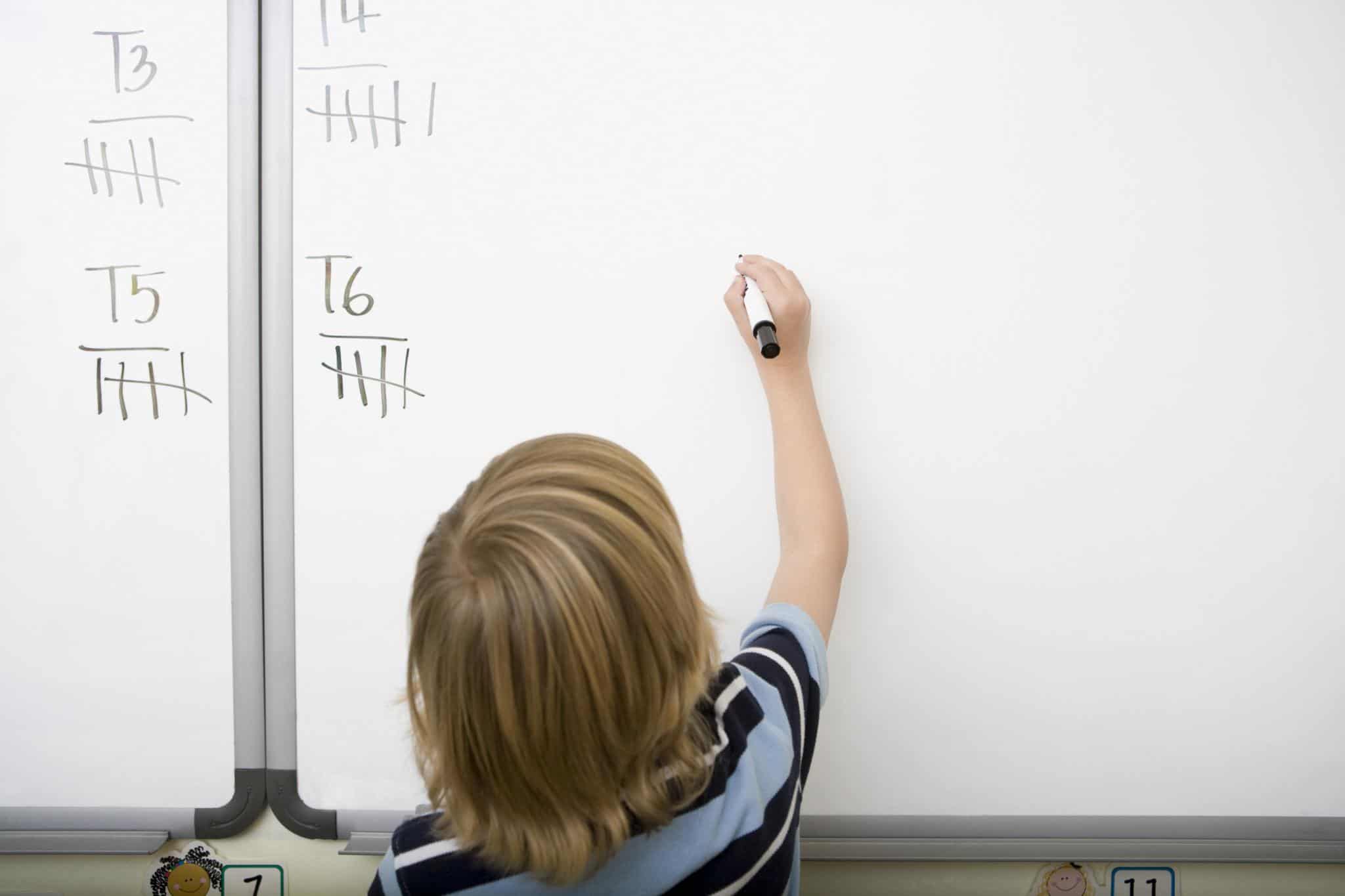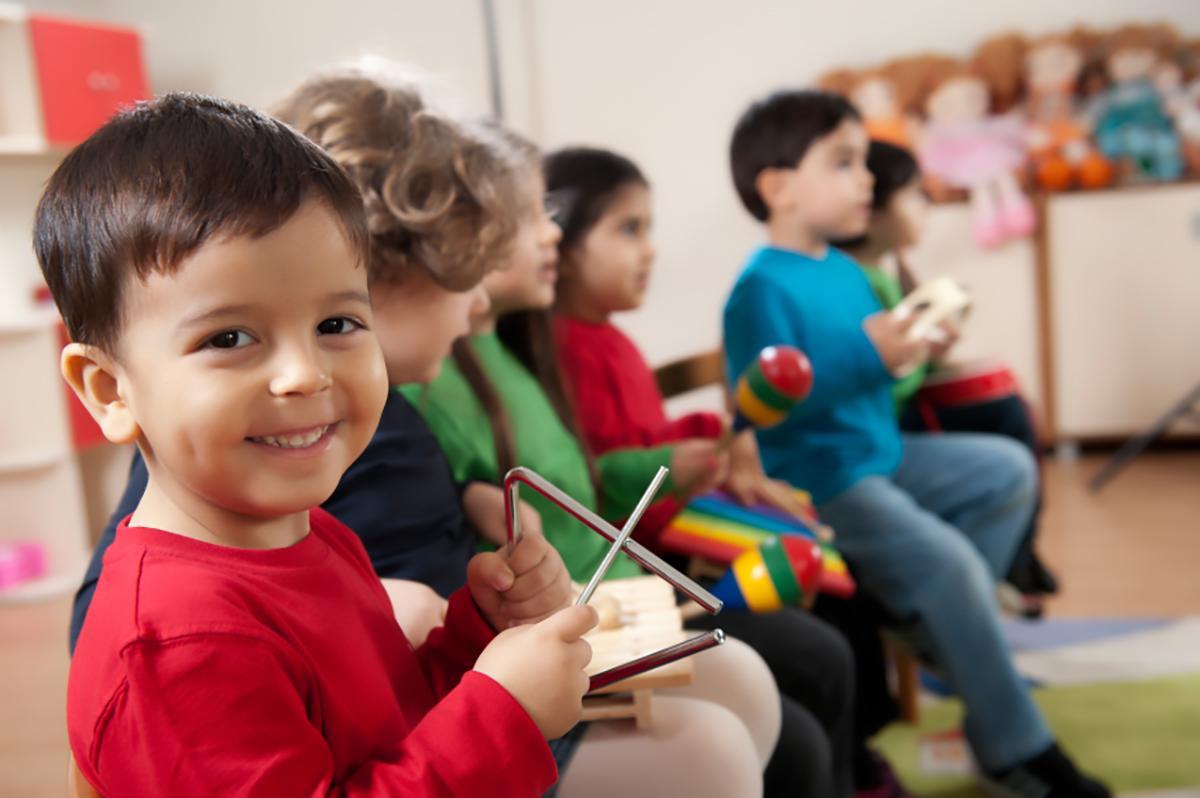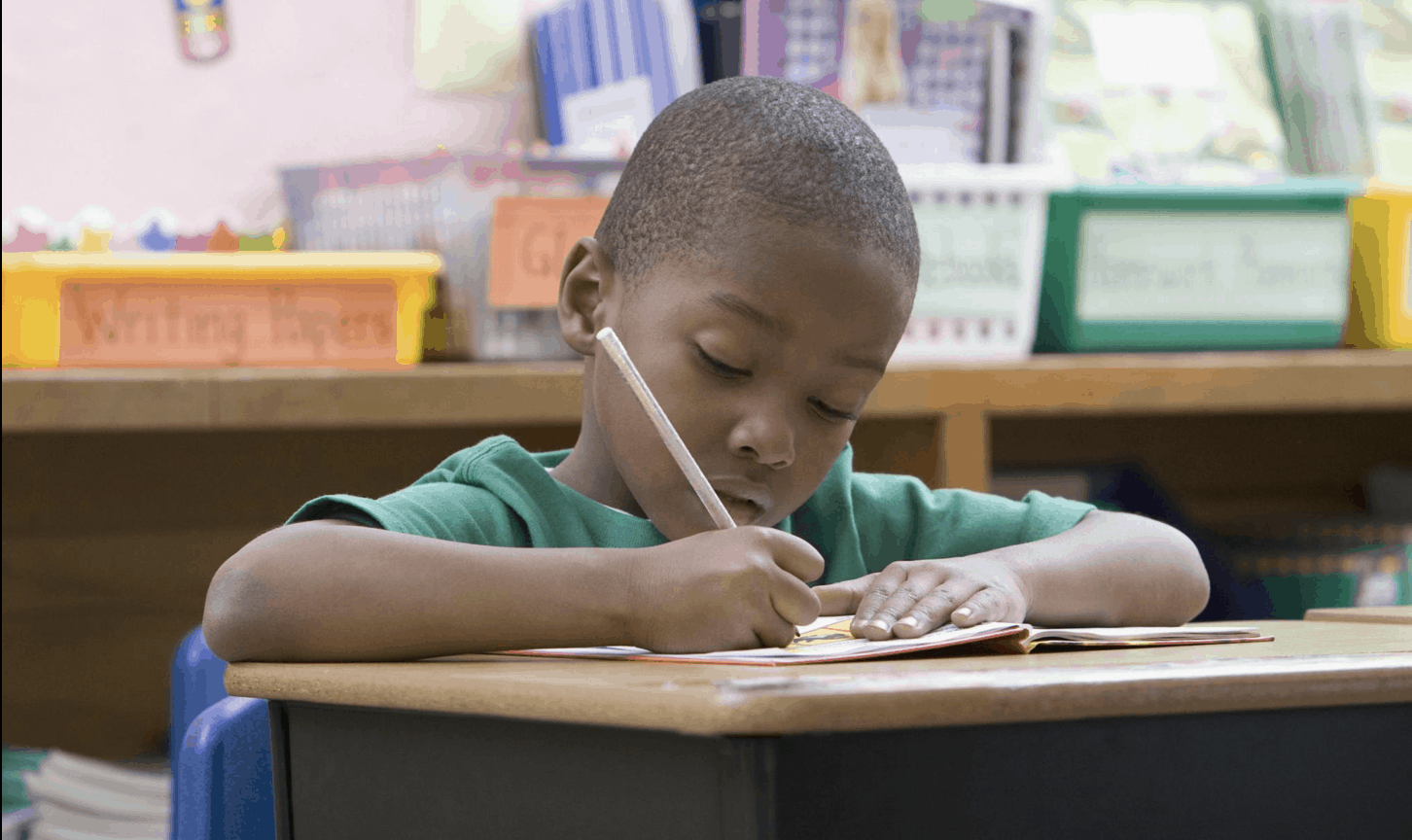The Good of Differentiated Instruction Arts Education Different Intelligences
Gone are the days when teachers could rely on an IQ test to measure out a student's intelligence. A recent study involving over 100,000 participants found that no one test can mensurate how well a person would perform cognitive tasks.[viii] Because almost intelligence tests give just a 2-dimensional motion picture of a person's mental abilities, they don't always capture a student's full potential.
Based on research from psychology, linguistics, neuroscience, and other cerebral disciplines, Dr. Howard Gardner's theory of multiple intelligences was created to amend correspond the diversity in human intelligence.[iv] This theory non only considers traditional learning abilities like math and scientific discipline skills as markers of intelligence, but information technology besides includes more than diverse abilities, such every bit musical, social, and nature-based skills.
If y'all want to help students develop cerebral skills in a way that meets them at their strengths and shores up their weaknesses, one of the all-time ways to do so is through Gardner's multiple intelligence theory. Read on to observe the definition of multiple intelligences and how you tin can use multiple intelligences in the classroom.
What are Gardner's Multiple Intelligences?

In the past, many held upwardly the IQ examination every bit the "golden standard" for measuring intelligence; however, it does not fully capture all of the means a kid can succeed. Just considering a child has poor mathematical skills, for example, doesn't mean that they have impaired artistic or social skills.[5] For this reason, it'due south long been important for educational researchers to detect better means to measure a person's potential across the reading and logical skills that IQ tests measure.[nine]
The multiple intelligences theory was created by Dr. Howard Gardner, a professor of education at Harvard University, in 1983. It challenges the then-ascendant (and still sometimes prevalent) conventionalities that only linguistic and mathematical skills can define a person'due south intelligence.[2] Instead, Dr. Gardner proposed eight different skill sets that better grasp the full scope of a child'southward abilities.[2]
It's of import to notation, all the same, that Gardner's multiple intelligences constitute an educational theory and not scientific fact. While many teachers find the theory to exist a helpful framework for their curriculum, few studies have been done on whether it is the most accurate model of human intelligence or on its success rate in schools.[15] Only from a professional person development standpoint, the theory of multiple intelligences is a great reminder for teachers that all students have different strengths and the potential for academic achievement.
The list of Gardner'due south multiple intelligences includes:
- Linguistic intelligence
- Logical-mathematical intelligence
- Spatial intelligence
- Musical intelligence
- Bodily-kinesthetic intelligence
- Naturalistic intelligence
- Interpersonal intelligence
- Intrapersonal intelligence
Each of these intelligences are relatively independent of i another.[i] This means that a child tin can be highly adept in ane intelligence and struggle with another. An athlete, for example, could have strong bodily-kinesthetic and spatial intelligence only poor musical intelligence. That's why it's so important to utilise instructional strategies that involve a variety of these multiple intelligences so every child has the opportunity to larn in a way that works best for them.
Linguistic Intelligence
Linguistic intelligence involves the ability to comprehend words while reading, writing, or speaking. This can include reading and writing in a person'south native tongue, but information technology also involves the ability to acquire new languages.
A few activities and skills related to linguistic intelligence include:
- Reading books aloud or independently
- Learning new vocabulary words
- Writing stories, sentences, or essays
Logical-Mathematical Intelligence
Logical-mathematical intelligence refers to the ability to use reason and analysis to solve problems. Children with stiff logical-mathematical skills are also often skilled at identifying patterns to develop answers to a question.
A few logical-mathematical intelligence skills and activities include:
- Learning addition, subtraction, and other math concepts
- Using the scientific method to exam hypotheses
- Using logical abilities to create compelling debates
Spatial Intelligence
Spatial intelligence involves the ability to visualize and dispense environments. Children with strong spatial intelligence are aware of the space effectually them and skilled at manipulating information technology in artistic or innovative ways.
Spatial intelligence skills or activities yous could use in class include:
- Putting together puzzles
- Painting, sculpting, or other artistic activities
- Performing tasks that involve hand-eye coordination
Musical Intelligence
Musical intelligence is defined every bit the power to capeesh, create, and perform music. It involves not only does sensory musical activities, simply as well the theoretical side of music, such as limerick.

A few musical intelligence skills or activities can include:
- Practicing pitch or a sense of rhythm
- Learning to sing or play an musical instrument
- Recognizing musical notes or patterns
Actual-Kinesthetic Intelligence
Bodily-kinesthetic intelligence involves skillfully moving and controlling your body. Children with a potent sense of bodily-kinesthetic intelligence often succeed in hands-on activities rather than theoretical assignments.
If you want to effort bodily-kinesthetic intelligence activities in grade, a few ideas can include:
- Participating on a sports team
- Doing relay-races or outdoor games
- Learning the choreography to a trip the light fantastic toe
Interpersonal Intelligence
Interpersonal intelligence refers to the power to interact with others in a healthy and meaningful way. Students skilled in interpersonal intelligence can be introverted or extroverted, just they are often good at making and maintaining friendships.
Activities and skills related to interpersonal intelligence include:
- Making positive relationships with peers
- Using effective communication skills
- Comforting a friend when they're feeling down
Intrapersonal Intelligence
Congruent in some means with interpersonal intelligence, intrapersonal intelligence is defined equally the ability to empathise and analyze your own emotions, actions, and beliefs. It is closely linked to the social-emotional skill of cocky-awareness, or developing an understanding of yourself and how others perceive you lot.
Skills and activities that involve interpersonal intelligence include:
- Creating a reflection journal
- Nurturing a potent sense of introspection
- Practicing mindfulness activities like meditation
Naturalistic Intelligence
The eighth type of intelligence, naturalistic intelligence, refers to a person'southward sensitivity to and appreciation for the natural world. Students with naturalistic intelligence oftentimes have an analogousness for recognizing and interacting with plants and animals.
A few activities or skills related to naturalistic intelligence include:
- Hiking, camping, or other outdoor activities
- Taking care of animals
- Recognizing different types of plants
In addition to these viii types of intelligences, Dr. Gardner considered calculation existential intelligence. This would involve a person's ability to understand themselves and the world around them with a philosophical mindset.[x] At this time, notwithstanding, it is non one of the official intelligences in his theory.
How the Multiple Intelligence Theory Can Help You Attain Struggling Learners
 I of the primary reasons that Gardner's learning styles can lead to more constructive educational activity strategies than IQ-based strategies is considering the approach is better at reaching children with disabilities. Traditional intelligence tests simplify the complexity of the human encephalon and can be biased against certain demographics. People with feet, for example, more often than not exercise poorly on these tests but may otherwise exist intelligent.[7]
I of the primary reasons that Gardner's learning styles can lead to more constructive educational activity strategies than IQ-based strategies is considering the approach is better at reaching children with disabilities. Traditional intelligence tests simplify the complexity of the human encephalon and can be biased against certain demographics. People with feet, for example, more often than not exercise poorly on these tests but may otherwise exist intelligent.[7]
Using multiple intelligences in the classroom, on the other hand, is proven to aid students with dyslexia and other learning disabilities.[eleven] Non all students' strengths are within traditionally valued types of intelligence similar reading or math skills. By discovering the intellectual gifts a child already possesses, you can find ways to piece of work with their existing strengths and help irksome learners in the classroom.
Additionally, multiple intelligences theory tin can help teachers see cognitive abilities in a mode that better aligns with science than traditional intelligence tests. Even iv- and five-year-olds brandish strengths and weaknesses within different types of intelligence that function independently.[ane] When a student struggles with one skill, keeping the multiple intelligences theory in mind can help teachers see a student's potential instead of just their weaknesses.
5 Multiple Intelligence Activities and Tips for Reaching Different Types of Learners
When you use multiple intelligences theory in your schoolhouse, you can provide every pupil with differentiated instruction strategies that work with their strengths and weaknesses.[iv] Not only can this approach help students improve, but it tin can as well help teachers change their perspective towards tiresome learners or students with disabilities.
Use these five multiple intelligence activities and strategies to aid all children in your class reach their potential:
- Try to link all instructional objectives to at least two types of intelligences. If you lot're teaching students about multiplication tables, for example, you could add visual references or teach children a song about multiplying.[3]
- The multiple intelligences theory is continued to multisensory learning, which teaches that children acquire amend with activities that involve more than one sense.[fourteen] Engage your students' visual, tactile, auditory, and other senses to reach more than students.
- Incorporate all of the dissimilar multiple intelligences at least once a calendar week. Create a weekly checklist with all 8 intelligences so you make sure you're using a comprehensive multiple intelligence strategy in class.
- When planning interventions for struggling students, notice what their strengths are as continued to the multiple intelligences theory. If a child has strong spatial intelligence only poor linguistic skills, for example, you may exist able to apply their strengths to teach difficult concepts.
- Use multiple intelligence strategies with ELL students, every bit this tin be particularly helpful for teaching concepts in a language other than their native tongue.[13]
Sources:
- Gardner, H., and Hatch, T. Multiple Intelligences Go to School: Educational Implications of the Theory of Multiple Intelligences. Educational Researcher, November 1989, 18(8), pp. 4-ten.
- Silvery, H., Strong, R., and Perini, M. Integrating Learning Styles and Multiple Intelligences. Educational Leadership, September 1997, 55(1), pp. 22-27.
- Armstrong, T. Multiple Intelligences: Seven Means to Approach Curriculum. Educational Leadership, November 1994, 52(3), pp. 26-28.
- Gardner, H. Multiple Intelligences as a Partner in School Improvement. Educational Leadership, September 1997, 55(1), pp. 20-21.
- Davis, G., Christodoulou, J., Seider, Southward., and Gardner, H. The Theory of Multiple Intelligences. Cambridge Handbook of Intelligence, 2011, New York: Cambridge Academy Printing.
- Huntsmann, P.R., and O'Loughlin, V.D. Another Blast in the Coffin for Learning Styles? Disparities amidst Undergraduate Anatomy Students' Report Strategies, Grade Performance, and Reported VARK Learning Styles. Anatomical Sciences Didactics, 2019, 12(1), pp. vi-19.
- Oostdam, R., and Meijer, J. Influence of test anxiety on measurement of intelligence. Psychology Rep, Feb 2003, 92(one), pp. 3-twenty.
- Hampshire, A., Highfield, R.R., Parkin, B.L., and Owen, A.M. Fractionating Human Intelligence. Neuron, December 2012, 76(6), pp. 1225-1237.
- Harvard Graduate Schoolhouse of Teaching. Multiple Intelligences: Challenging the Standard View of Intelligence. Retrieved from harvard.edu: http://www.pz.harvard.edu/projects/multiple-intelligences.
- Smith, M. Howard Gardner and Multiple Intelligences. Retrieved from smcdsb.on.ca: https://sts.schools.smcdsb.on.ca/UserFiles/Servers/Server_97729/File/St.Thomas%20Aquinas%20Catholic%20Secondary%20School/Staff%20Links/Ms.Whelton/Gardners%20MI%20by%20Smith.pdf.
- Gardner, H. The theory of multiple intelligences. Annals of Dyslexia, Jan 1987, 37(i), pp. xix-35.
- Denig, Southward.J. Multiple Intelligences and Learning Styles: Ii Complementary Dimensions. Retrieved from cbe.ab.ca: http://projects.cbe.ab.ca/central/altudl/FILES/Multiple_Intellegences_Learning_styles.pdf.
- Beare, K. Multiple Intelligence Activities. Retrieved from thoughtco.com: https://www.thoughtco.com/multiple-intelligence-activities-1211779.
- Kallenbach, S., and Viens, South. Multiple Intelligences in Practice: Teacher Research Reports from the Developed Multiple Intelligences Study. Retrieved from worlded.org: https://www.worlded.org/WEIInternet/inc/common/_download_pub.cfm?id=16687&lid=3.
- Waterhouse, Fifty. Multiple Intelligences, the Mozart Upshot, and Emotional Intelligence: A Disquisitional Review. Educational Psychologist, 2006, 41(4), pp. 207-225.
Source: https://www.waterford.org/education/multiple-intelligences-activities/
0 Response to "The Good of Differentiated Instruction Arts Education Different Intelligences"
Post a Comment